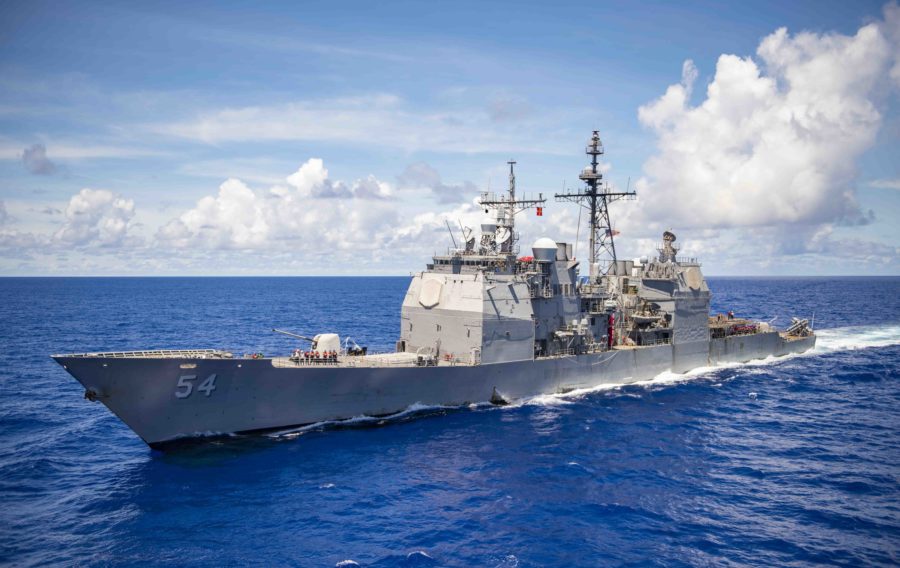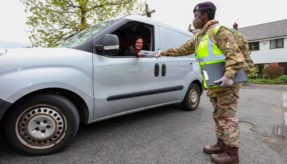
Writing for Defence Online, Bob Hogg, Global Marketing Director, Government, Aerospace & Defence Industries at SDL, part of the RWS Group, examines the challenge of finding the next generation of technicians.
Once markets return post-pandemic, so will the challenges of finding the next generation of technicians.
Technical publications supporting operations and maintenance in the aerospace and defence (A&D) industries play an instrumental role in asset readiness and mission achievement. With experienced maintenance staff retiring and the long onboarding process for replacements, many of whom are not native English speakers, readiness could soon be at risk. Fortunately, modern technologies are providing new opportunities to utilise technical publications information in productive and innovative ways.
Q: What are the key challenges of finding the next generation of technicians?
There is a worldwide labour shortage for technical talent across industries. Recent studies show that 78% of organisations, across industries, currently have trouble finding, hiring and training technicians, resulting in a reliance on overtime and other stop-gap efforts. While the urgency has slowed due to COVID-19, the problem is not going away anytime soon and will challenge hiring managers again in the near future.

At the core of this shortage is global demographic changes. Lower birth rates coupled with the retirement of the Baby Boomers from the workforce is driving shortages across numerous industries and geographic regions. One of the hardest hit areas is for technical resources in the A&D industry.
Contributing to the shortage, 80% of operational, maintenance and support personnel in the global A&D industry are non-native English speakers, but all aviation industry technical documentation is written in English. This presents a significant added challenge since it can take up to two years to train non-native English speakers to build competence in Simplified Technical English (STE).
Q: The shortage is even more pronounced in technical fields, especially maintenance in A&D. Is the aerospace and defence industry on the cusp of an enormous skills gap?
Yes, exactly. As senior staff retire and take a wealth of knowledge and experience with them, organisations are realising that technical knowledge is critical to newer team members’ productivity. This knowledge is codified and made accessible to maintenance staff in highly visual forms residing on their electronic devices. This information contains years of knowledge from industry veterans that is missing from today’s younger workforce. Thankfully, modern technologies are offering a new approach to technical publications, helping older workers share their knowledge in a simple, easy to understand way.

For example, in the North American market, research by the US Bureau of Labor Statistics suggests employment within aerospace manufacturing has been on a steady decline since 2012. Back in 2000, there were 516,700 employed across the industry, but these numbers have dropped from 498,600 to 479,900 over the past three years. A more recent study (April 2020) by the Aviation Technician Education Council noted “Although the number of entering aviation mechanics in 2019 hit a 17-year high, those outputs will need to increase another 37 percent to meet 20-year demand projections”.
Q: So, how can technology help close the technician gap?
The historical approach to knowledge transfer was to train in the classroom and then reinforce in the field with hands-on approaches like apprenticeships. This remains a well-established approach, but has faced many challenges during the pandemic and only solves part of the problem.
Fortunately, technology has come to the rescue. Real-time learning can now leave the classroom and move on-site with In-Context Learning training platforms. These platforms can be used for refresher and reinforcement training that can be delivered in real-time, in any language and with senior technicians and apprentices in different physical locations.
Other technologies are also bridging the gap. Several of our defence manufacturing clients use Machine Translation (MT) to deliver dual-language technical publications within their Foreign Military Sales (FMS) programmes. Another real-life example is FMS product support across multiple languages because emails, live chat and documents are now vital when exchanging information between global FMS customers and their Factory Support Representatives.
Q: Whether in training mode or maintenance mode, having an interactive access to knowledge or best practice seems to be key. Is that the case?
Yes, there are many things that interactive tech pubs like an Interactive Electronic Technical Publication (IETP) can deliver, in a training scenario, on the maintenance line or by blurring the distinction between both.
An IETP is a set of information needed for the description, operation and maintenance of a product. The IETP is optimally arranged and formatted for interactive screen presentation to an end user – usually a technician – on an electronic display and offers conditional branching mechanisms for better decision making.

An IETP can deliver real-time chat and technical process instructions on a single platform that is enhanced with AI-based training and multi-language instruction. For example, when opening a control panel in English, the technician is presented with the option to view the next steps in Spanish or Chinese. Incorporating this technology into an organisation’s processes helps overcome both a language and experience shortfall.
This intelligent approach allows the accrued knowledge of technicians both past and present to be collected in one central location, with advice and workflows embedded into the publications. These publications can be viewed online or offline, depending on the technician’s need.
Q: This all sounds great, but in practical terms, what does it mean?
To start with, we can look at the benefits of embedding training into workflows. Technicians will be able to launch tasks and on demand training right from their place in the process. As more intelligence is added into the IETP, actions will be triggered based on Machine Learning (ML) logic that assesses time on a task and the technician’s navigation of required steps. ML algorithms can assess time on task or time on a specific step versus the norm and auto suggest additional assistance.
Interestingly, it will also look for “who else knows what” – such as linking the maintenance technician with the last person to work on this particular task in the workflow or a more senior technician who is available to advise or assist (either in-person or virtually). The platform will further empower the technician with more “in-context” learning as well as the ability to call an expert directly within the work process. Or, an auto-launched computer based training (CBT) video could be presented to them based on their time on task for that particular part of the maintenance, repair or refit process.
We also provide the ability for the technician to escalate a process into a virtual reality (VR) session, allowing the technician to connect live and show an expert what they are looking at. Together they can look at the equipment with overlays of the asset diagram. The tech can describe the problem or ask questions like: “See here, it says to remove the 5mm bolt – but there isn’t one. Am I looking at the right procedure, has the system been updated or is the manual wrong?” The expert in this scenario could be a senior technician or a virtual assistant seeded with full learnings from all of the most senior experts and continuously updated with new learnings from everyday activities.
In many ways, this kind of ever evolving smart learning can re-engineer the skills gap not just for the apprentice, but also the experienced technician. While closing out the final step in a maintenance task, critical information can be modified, essential task timings can be enhanced and the mean time to repair (MTTR) can be reduced from the evolving best practice learnings across the fleet – all without compromising the current mission objectives.
Better service quality and productivity, improved cost efficiency and reduced downtime are all linked to a technician’s proficiency development, making on-going and regular skills development essential. Modern technologies empower a new approach to technical publications, bridging the skills gap by passing knowledge from the most senior technical members of the tribe into organisational best practice that can be made available to all, anytime, anywhere.
If you would like to join our community and read more articles like this then please click here







